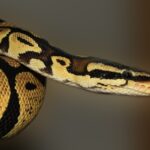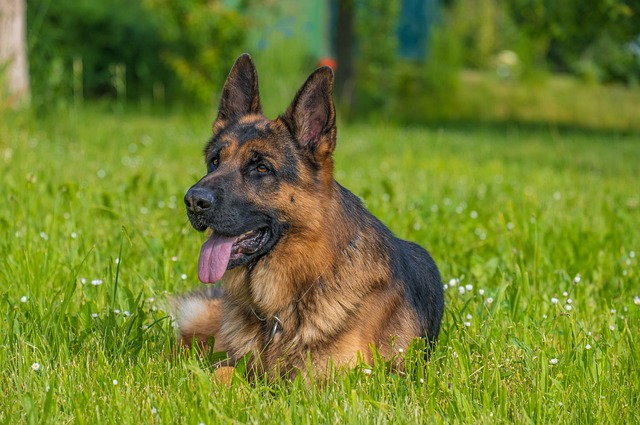 30 Mar
30 MarHerding Dog Breeds: The Masters of Working with Livestock
Herding dog breeds in the world
Introduction
The historical significance of herding dogs
- All through history, grouping dogs has played a vital role in enhancing human civilization. Their capacity to work closely with creatures has made them significant to agriculturists and shepherds
- From antiquated times to advanced times, these shrewdly and exceedingly trainable dogs have been instrumental in the viable administration and control of herds.
The enduring traits and specialized characteristics
- Herding mutts have a set of persevering characteristics and specialized characteristics that make them extraordinarily suited to working with livestock.
- Their sharp instinctual, nimbleness, and capacity to think independently enable them to expect and react to the desires and developments of herds.
- These mutts are known for their tall vitality levels, work ethic, and immovable commitment to their assignments, making them experts in working with livestock.
Origins and Evolution of Herding Dog Breeds
Tracing back to their ancient ancestry
- The roots of crowding canine breeds can be traced back to old times when people, to begin with, began subduing and domesticating creatures for agriculture.
- These pooches advanced nearby people, accepting parts that permitted for proficient control and direction of livestock.
- The most punctual illustrations of crowding mutts can be found in antiquated cave canvases and artifacts, portraying their near organization with early peaceful societies.
Breeding practices and selection for herding abilities
- Over centuries, people specifically bred grouping pooches, centering on refining and upgrading their intrinsic crowding abilities.
- Careful breeding hones improved particular characteristics essential for viable crowdings, such as insights, nimbleness, and the capacity to reply to verbal and non-verbal cues.
- Herding pooches were chosen based on their normal inclination for crowding and their eagerness to work collaboratively with humans.
Influential historical figures in herding dog development
- Throughout history, striking figures have played a noteworthy part in the advancement and refinement of grouping canine breeds.
- Shepherds and ranchers who recognized the esteem of crowding pooches committed their time and exertion to breeding and preparing them for ideal working abilities.
- Some compelling authentic figures known for their commitments to crowding pooch improvement incorporate 19th-century shepherd and breeder James Hinks, who played a pivotal part in the improvement of the Ancient English Sheepdog.
The Working Mindset of Herding Dogs
The innate instinct and intelligence behind herding behavior
- Herding mutts have an intrinsic intuition and insights that drive their behavior towards herding.
- These mutts have a profound understanding of the social elements inside crowds and can make split-second choices to direct and control livestock.
- Their normal capacity to expect and react to the developments of crowds illustrates their exceptional insights and problem-solving skills.
Training methods and techniques for cultivating herding skills
- Herding pooches require appropriate preparation to refine their instinctual and develop their crowding skills.
- Various preparing strategies and strategies, such as positive fortification, consistency, and redundancy, are utilized to instruct these pooches on the fundamental commands and signals for successful herding.
- Building a solid bond and belief between the puppy and the handler is significant for effective preparation and the advancement of a concordant working relationship.
Understanding the psychological aspects of herding dogs
- To maximize the potential of crowding pooches, it is basic to consider their one-of-a-kind mental traits.
- These pooches flourish on deliberate work and incitement, and they require outlets for their mental and physical energy.
- Providing them with suitable assignments and challenges makes a difference in fulfilling their instinctual and avoiding behavioral issues that will emerge from boredom or under-stimulation.
The Diversity of Herding Dog Breeds
Border Collie
Historical significance and breed traits
- Considered the encapsulation of crowding puppy breeds, Border Collies have a long history of working closely with livestock.
- Originating from the Anglo-Scottish border locale, these pooches were specifically bred for their grouping ability and versatility.
- Known for their strong center, exceptional problem-solving capacities, and extraordinary work ethic, Border Collies exceed expectations to the extent of crowding tasks.
Versatility and adaptability in herding tasks
- Border Collies are exceedingly flexible and can adjust to different crowding errands and environments.
- Their normal capacity to control animals amplifies to sheep, cattle, ducks, and other animals.
- These pooches exceed expectations with different styles of crowding, counting the “eye” strategy utilized with sheep and the “hunch and gaze” strategy utilized with cattle.
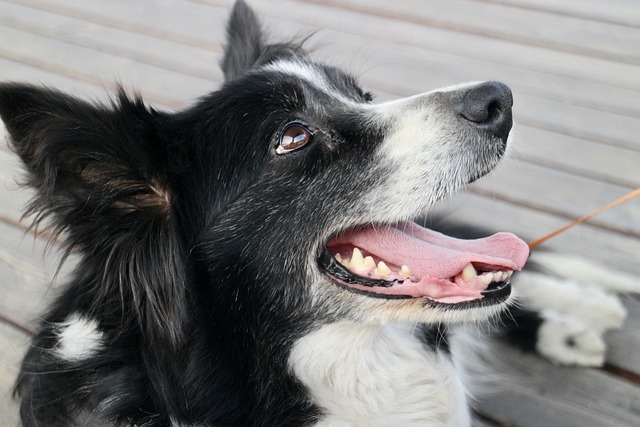
German Shepherd
Origins and development as a herding breed
- Created as a crowding puppy in Germany, German Shepherds have a solid work drive and normal crowding instincts.
- While their uncommon capacities have driven them to be broadly recognized for their work in other areas, such as law authorization and look and protect, they stay fabulous crowding dogs.
Unique characteristics and working capabilities
- German Shepherds have a combination of quality, insights, and extraordinary trainability that makes them well-suited for grouping tasks.
- Their sharp faculties, such as intense hearing and sharp center, empower them to closely screen and control the development of livestock.
- With their defensive nature and devotion, German Shepherds frame solid bonds with their human handlers, making them profoundly solid accomplices in grouping situations.

Australian Cattle Dog
Australian herding history and breed evolution
- Bred particularly for Australian cattle crowding, Australian Cattle Pooches, also known as Blue Heelers, have a wealthy crowding history.
- They were created by crossing different breeds, including Collies and Dalmatians, to make an intense and strong grouping of canines competent in persevering cruel Australian conditions.
Physical attributes and specialized herding techniques
- Australian Cattle Dogs’ physical traits, such as their continuance, dexterity, and quality, make them well-suited for working with cattle.
- They have a special grouping strategy known as “nipping,” where they nip at the heels of animals to direct them.
- Their common capacity to expect the developments of livestock and their readiness to require charge make them profoundly compelling in overseeing herds.
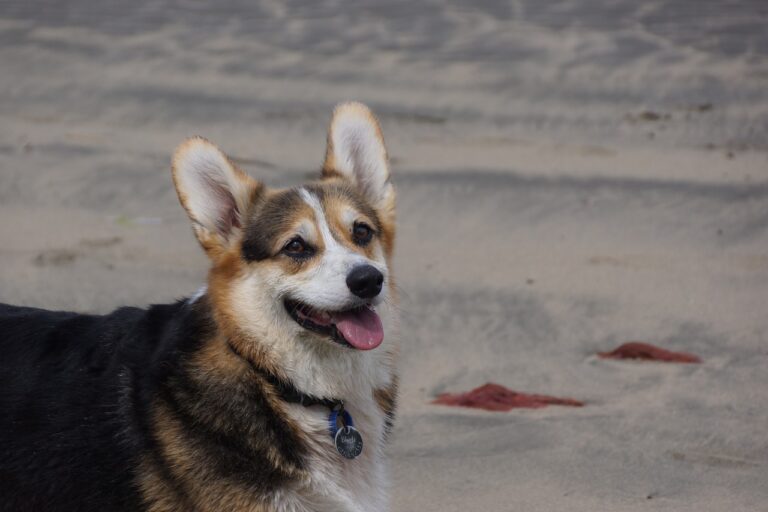
Shetland Sheepdog
Miniature herding dogs with remarkable abilities
- Despite their smaller measure, Shetland Sheepdogs, regularly called Shelties, have momentous crowding abilities.
- They were originally bred within the Shetland Islands of Scotland to help agriculturists group little animals, such as sheep and ponies.
Their role in herding and companion positions
- Shelties exceed expectations in grouping errands that require accuracy and controlled development due to their dexterity and intelligence.
- Beyond their grouping capabilities, Shetland Sheepdogs have moreover found monstrous notoriety as beloved companion pooches due to their warm nature and tall intelligence.
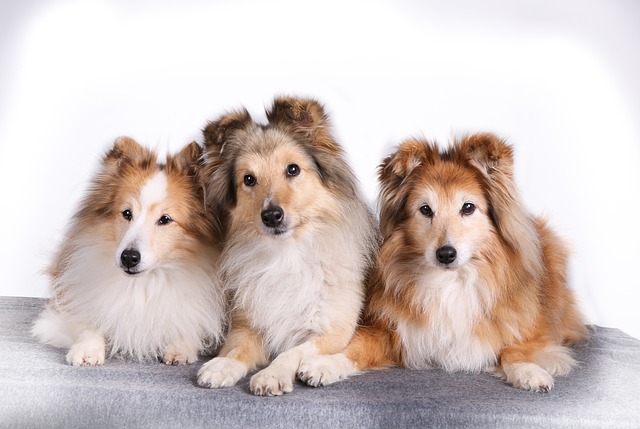
Herding Dogs Around the World
Border Collies in the United Kingdom and the United States
- Border Collies are broadly recognized as exceptional grouping pooches in both the Joined Together Kingdom and the Joined Together States.
- They have a critical nearness in sheep cultivating regions, where their uncommon crowding abilities are utilized to oversee huge flocks.
- In the joined-together States, Border Collies are effectively included in grouping competitions and trials, displaying their exceptional capacities to a more extensive audience.
Common herding breeds in Australia and New Zealand
- Australia and Modern Zealand are domestic to a few crowding breeds particularly created for crowding animals in these regions.
- Apart from the Australian Cattle Canine, other common crowding breeds incorporate the Australian Kelpie and the Unused Zealand Huntaway.
- These mutts have had a critical effect on the agrarian industry, helping agriculturists within the administration and control of groups over tremendous territories.
Traditional herding breeds in Scandinavia and Europe
- Scandinavia and Europe have a wealthy convention of crowding animals, with different conventional grouping breeds that have made a difference in shaping the rural hones of these regions.
- Examples of conventional crowding breeds incorporate the Swedish Vallhund, the Finnish Lapphund, and the Belgian Malinois.
- These pooches have played a necessary part in keeping up conventional animals cultivating, protecting social legacy, and supporting economic agrarian practices.
The Role of Herding Dogs Today
Working on farms and ranches
- Herding mutts proceed to be vital resources on ranches and ranches around the world, helping with the everyday administration and control of livestock.
- Their natural skillset and hardwired instinct significantly contribute to the smooth and productive working of cultivating operations.
Competitive herding trials and dog sports
- Herding trials and canine sports give a road for displaying the extraordinary capacities of crowding dogs.
- These competitions test the dogs’ crowding abilities, compliance, and problem-solving capabilities, highlighting their ability to work with livestock.
Herding breeds as service and assistance dogs
- The one-of-a-kind qualities and inclination of crowding pooches have driven them to extend their parts past crowding livestock.
- Herding breeds have been demonstrated to be amazing benefits and help mutts, helping people with incapacities and giving back in different capacities.
Health and Care Considerations
Common health issues in herding dog breeds
- While grouping mutts are by and large vigorous and strong, they may be inclined to certain well-being issues due to their serious movement levels and breed-specific traits.
- These can incorporate hip dysplasia, dynamic retinal decay, and certain innate conditions.
- Regular veterinary check-ups, fitting work, and adjusted eating are fundamental for keeping up the general well-being and well-being of grouping dogs.
Exercise and mental stimulation requirements
- Herding mutts flourish on physical workouts and mental incitement to keep them locked in and avoid behavioral issues.
- They require plentiful openings to fulfill their common crowding instinctual through errands, diversions, and intelligently exercises.
- Activities such as deftness preparation, compliance work, and astound toys can offer assistance to channel their vitality and keep their minds sharp.
Proper nutrition and medical care for optimal well-being
- Providing crowding pooches with an adjusted and nutritious count of calories is vital for their physical well-being and performance.
- Consulting a veterinarian for direction on fitting diets and guaranteeing standard immunizations and preventive therapeutic care are imperative for their by and large well-being.
Famous Herding Dogs in History and Pop Culture
Legendary herding dogs of the past
- Throughout history, different grouping mutts have gathered acclaim and reverence for their remarkable abilities.
• Notable cases incorporate Lassie and Rin Tin Tin, who got to be family names through their appearances in movies and TV appears, exhibiting the insights and dependability of crowding pooch breeds
Representation of herding breeds in literature and film
- Herding breeds have moreover found representation in writing and film, captivating gatherings of people with their stories and adventures.
- The anecdotal characters of Ancient Yeller, Angel, and Fly in well-known books and motion pictures have made a difference and shed light on the insights and flexibility of grouping pooch breeds.
The Debate: Herding Instinct vs. Domestication
When it comes to herding dog breeds, there’s a continuous talk between their normal herding instinct and the challenges they confront in today’s advanced living. These breeds have been specifically bred for eras to exceed expectations in working with animals, and their established behaviors are profoundly imbued inside them. However, in our urban environments, herding dog owners often encounter unique challenges in managing their dogs’ instincts.
Exploring the conflict between herding instincts and modern living
The conflict arises from the fact that herding dogs possess an inherent desire to gather, control, and move livestock. These instincts are deeply rooted and can manifest in various ways, such as nipping at heels or attempting to “herd” children or other pets. In today’s modern living, where many people do not have livestock, it can be challenging for herding dog owners to redirect these instincts suitably.
Challenges faced by grouping dog owners in urban environments
In urban situations, grouping dog owners frequently faces special challenges due to their dogs’ crowding instincts. These dogs require sufficient mental and physical incitement to avoid behavioral issues coming about from pent-up energy. Without proper outlets for their herding instincts, herding dogs may become anxious, frustrated, or even exhibit destructive behaviors within a confined space. Hence, it becomes significant for owners to discover creative outlets and activities to lock in and fulfill their dogs’ common crowding instinct.
Frequently Asked Questions (FAQs)
What makes breeding for the livestock industry sound?
The Collie has certain characteristics that make it successful. These animals often have an unusual sight, are of good quality, and are very happy. They learn quickly and can interpret and respond to teacher commands. Cultural practices such as entrainment and storage during expansion also allowed them to play a role in biological agriculture.
Can herding dogs adapt to non-livestock scenarios?
Yes, herding dogs can adapt to non-livestock scenarios given proper training and socialization. While their primary inclination may be toward herding, these intelligent dogs can excel in a variety of activities and tasks beyond herding livestock. With consistent training and exposure to different environments, collies can make great companions and family pets.
How can I train a herding dog for everyday life?
Preparing a grouping dog for lifestyle requires a combination of positive support, steady workouts, mental incitement, and socialization. Owners should center on diverting their dogs’ grouping instinctual towards fitting outlets, such as astound toys, nimbleness preparing, or indeed locks in in canine sports like compliance or rally. Keeping up an organized schedule and giving standard physical and mental challenges will help channel the dogs’ energy and keep them substance in their urban living environment.
What are some popular mixed breeds involving herding dogs?
There are a few well-known blended breeds that include grouping dogs. A couple of outstanding cases include the Australian Shepherd and Border Collie mix, known as the “Border-Aussie.” This blend combines the experiences and drive of two exceptional gathering breeds. Another prevalent blend is the “Labrador Heeler,” which is a mix of a Labrador Retriever and an Australian Cattle Pooch. These mixed breeds as often as possible secure the crowding found and experiences of their parent breeds, making them profoundly adaptable and flexible companions.
Are there any health risks with herding breeds?
While herding dog breeds are generally healthy, there are a few health risks that potential owners should be aware of. A few grouping breeds are inclined to certain hereditary conditions, including hip dysplasia, epilepsy, or dynamic retinal decay. Responsible breeders ensure the health and genetic testing of their breeding dogs to minimize the risk of passing on these conditions. Customary veterinary check-ups, an adjusted count of calories, and workouts are fundamental for keeping up the general well-being of any grouping pooch.
Conclusion
Grouping dog breeds means ease and flair when working with animals. Despite the challenges of owning a puppy in an urban environment, these puppies have traits and qualities that make them very friendly. By understanding and regarding their grouping instinctually and giving them fitting outlets for their vitality, crowding mutts can adjust to existence while still displaying their normal abilities.
In conclusion, grouping pooch breeds is not as it were profitable resources in rural settings but moreover cherished family individuals and working accomplices. These pooches have played an imperative part in our lives for their dedication and dependability so they ought to be remunerated for the part they proceed to play in society. Let us celebrate the masters of working with livestock – the herding dog breeds.
For more information:



